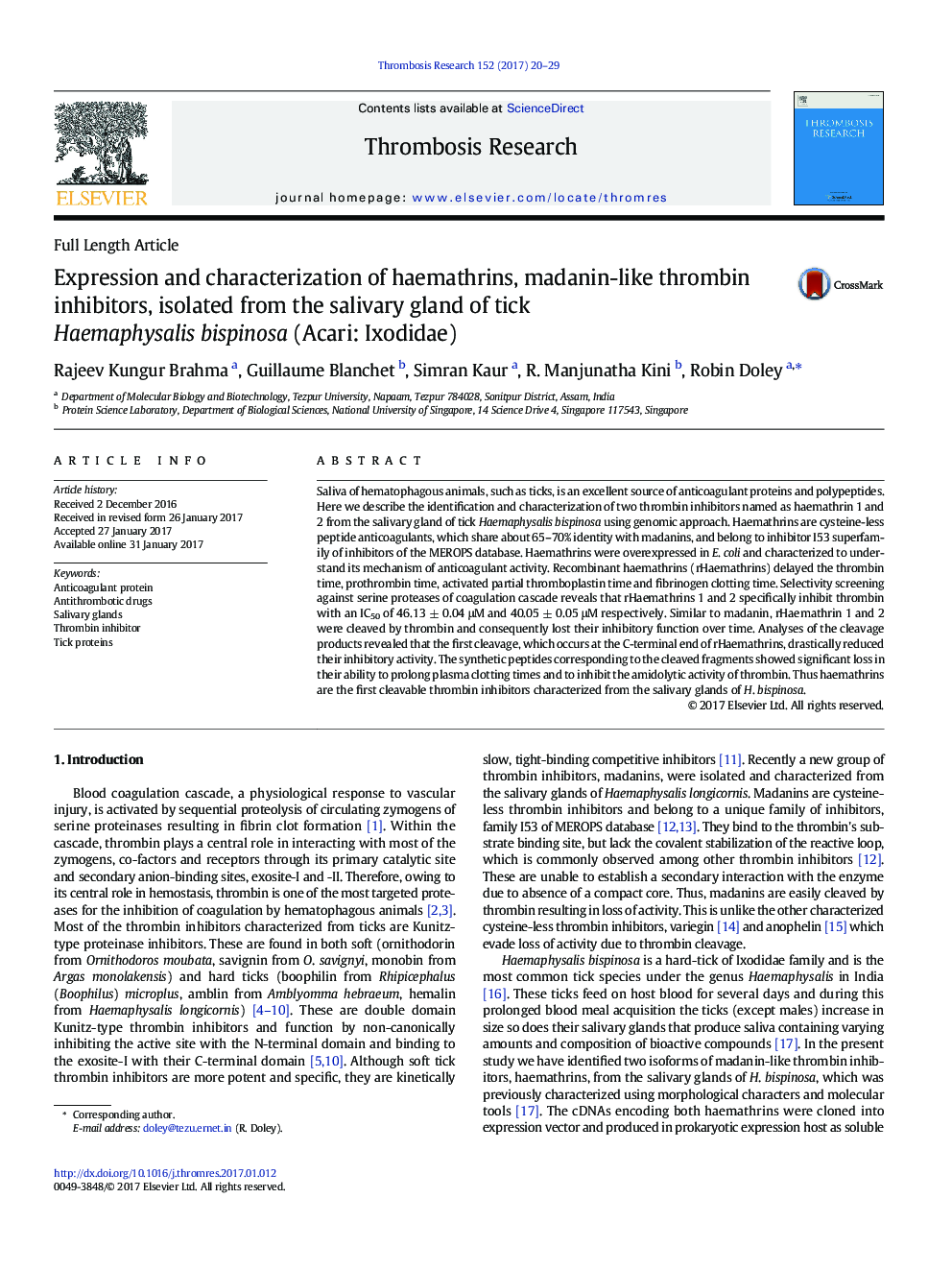| Article ID | Journal | Published Year | Pages | File Type |
|---|---|---|---|---|
| 5622176 | Thrombosis Research | 2017 | 10 Pages |
Abstract
Saliva of hematophagous animals, such as ticks, is an excellent source of anticoagulant proteins and polypeptides. Here we describe the identification and characterization of two thrombin inhibitors named as haemathrin 1 and 2 from the salivary gland of tick Haemaphysalis bispinosa using genomic approach. Haemathrins are cysteine-less peptide anticoagulants, which share about 65-70% identity with madanins, and belong to inhibitor I53 superfamily of inhibitors of the MEROPS database. Haemathrins were overexpressed in E. coli and characterized to understand its mechanism of anticoagulant activity. Recombinant haemathrins (rHaemathrins) delayed the thrombin time, prothrombin time, activated partial thromboplastin time and fibrinogen clotting time. Selectivity screening against serine proteases of coagulation cascade reveals that rHaemathrins 1 and 2 specifically inhibit thrombin with an IC50 of 46.13 ± 0.04 μM and 40.05 ± 0.05 μM respectively. Similar to madanin, rHaemathrin 1 and 2 were cleaved by thrombin and consequently lost their inhibitory function over time. Analyses of the cleavage products revealed that the first cleavage, which occurs at the C-terminal end of rHaemathrins, drastically reduced their inhibitory activity. The synthetic peptides corresponding to the cleaved fragments showed significant loss in their ability to prolong plasma clotting times and to inhibit the amidolytic activity of thrombin. Thus haemathrins are the first cleavable thrombin inhibitors characterized from the salivary glands of H. bispinosa.
Related Topics
Health Sciences
Medicine and Dentistry
Cardiology and Cardiovascular Medicine
Authors
Rajeev Kungur Brahma, Guillaume Blanchet, Simran Kaur, R. Manjunatha Kini, Robin Doley,
